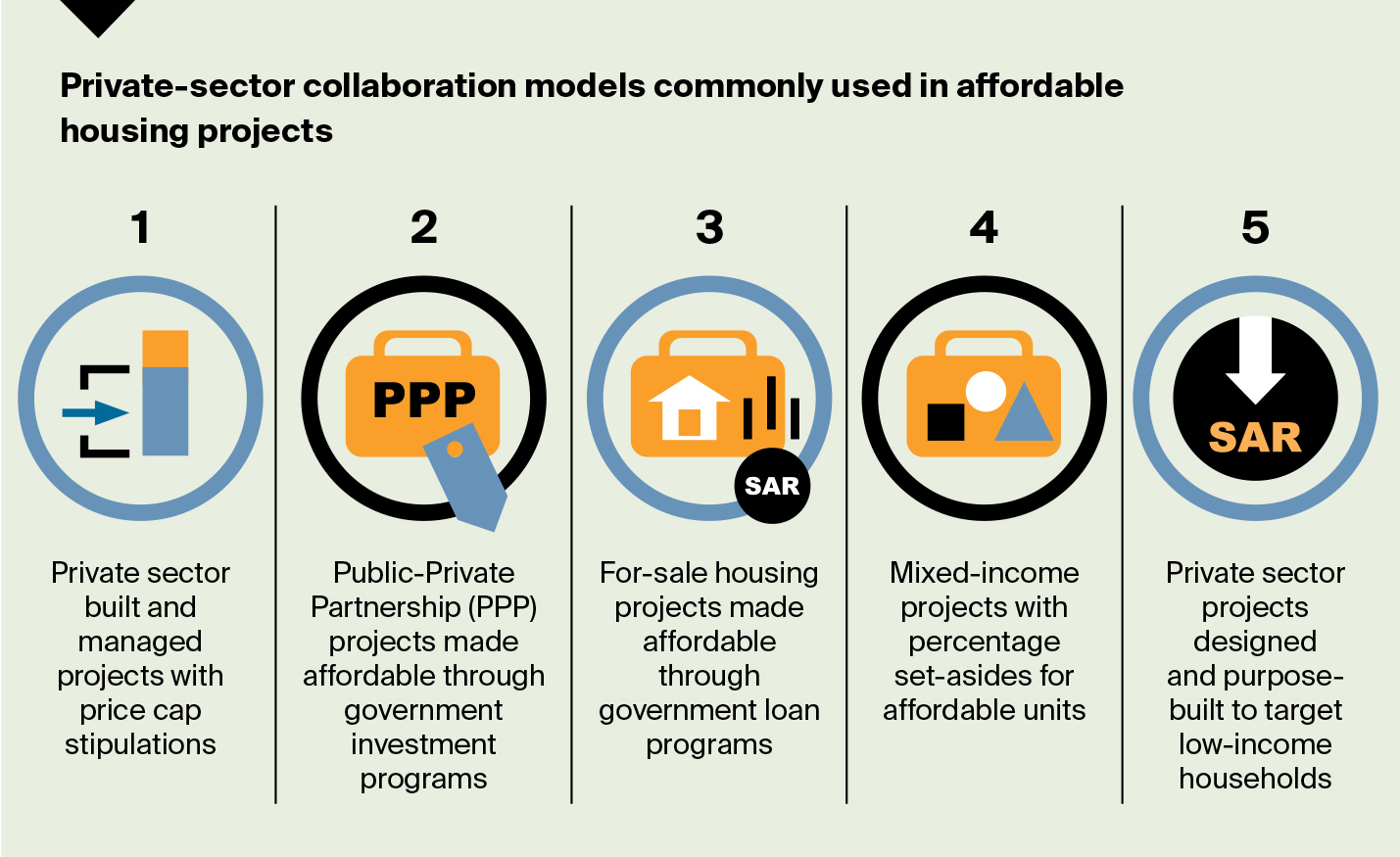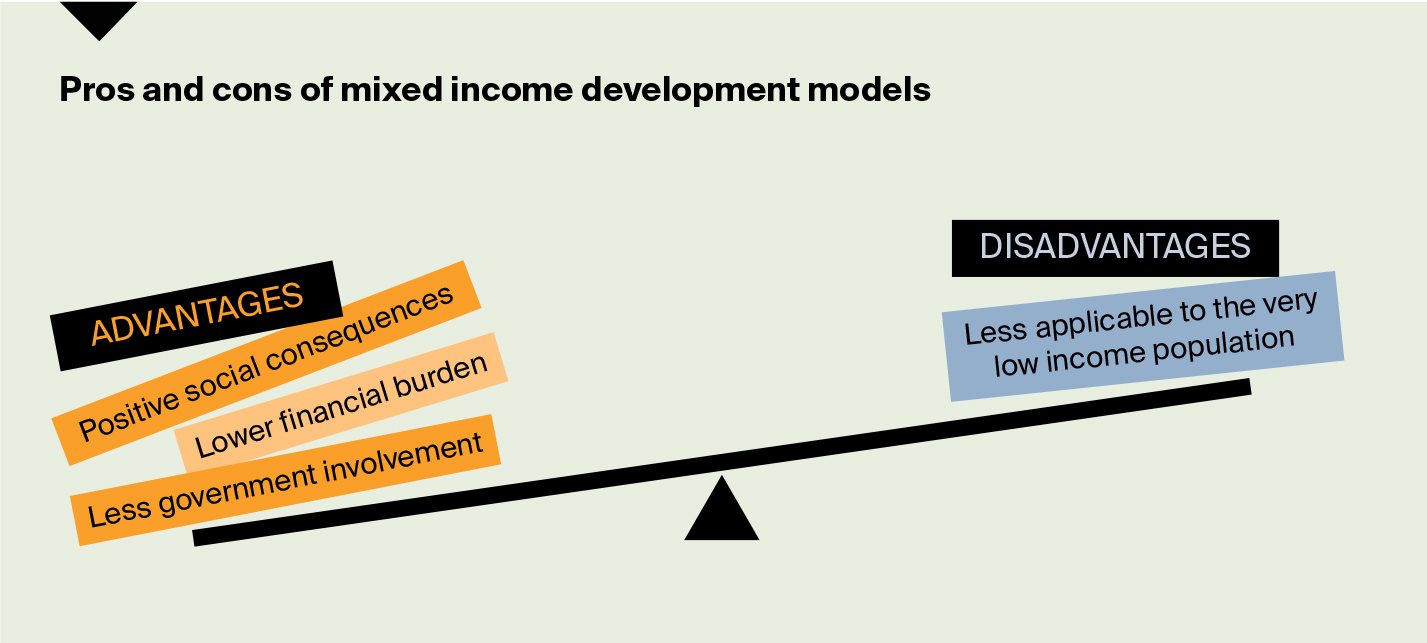Saudi Arabia’s Affordable Housing Challenge 2020 – Part 1
A detailed examination of private sector collaboration models for affordable housing projects.
2 minutes to read
Following our last blog which summarized unintended mixed results of government built and managed programs, we will now elaborate on five private sector collaboration models commonly used in affordable housing.

Model #1: Price Cap
Known in the United States as ‘’Section 8’’ housing, housing projects with price cap stipulations are private-sector built and managed housing which provides units at a lower than market rate to low-income individuals. The government in return pays a subsidy directly to the developer/property owner often amounting to the difference between what the low-income individuals can afford, and the true
market value of the unit.
Model #2: PPP
In the PPP development model, a private sector developer partners with a government agency specifically to develop affordable housing projects which are subsidized through government
investment directly into the project. The government investment can take different forms – including tax credits, direct equity investment, subsidized development and construction loans, etc.
Model #3: For-sale Housing
A development model which has been gaining popularity in recent years including in Saudi Arabia is to offer affordable housing along a for-sale business model. The key advantage to this development model is that it allows low-income individuals to actually participate in home ownership and all the associated benefits, rather than simply for-rent housing options.
Model #4: Mixed-income
One of the most popular development models for affordable housing internationally is the mixed-income project model. The premise of this development model is to incorporate affordable housing
within market-rate projects; this approach has several advantages:

Model #5: Purpose-built
The most recent trend in the affordable housing paradigm is private sector developers initiating, on their own and without any government program, projects which target mid-low-income households and individuals. However, this development model has only taken-hold in certain markets where conditions are specifically aligned. In addition, to-date this development model has only been seen in cases where the target is midlow-income individuals and households, and not low-income or very-low-income households.
Read our full Saudi Arabia Affordable Housing Challenge 2020 Research report here
For more details please contact Kaveh Samsamy, Partner, Development Management